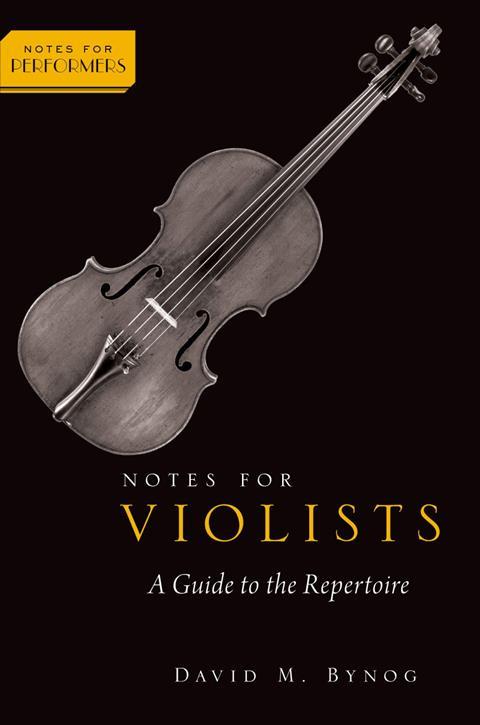Carlos Maria Solare reviews David M. Bynog’s latest book, the latest in the Notes for Performers series

Notes for Violists: A Guide to the Repertoire
David M. Bynog
448PP ISBN 9780190916114
Oxford University Press £25.99
OUP’s ongoing Notes for Performers series is aimed at helping musicians to ‘connect performance studies with pertinent aspects of scholarship’. While undergraduate students are the principal target audience, they are not the only readers who will profit from the wealth of information provided here. David Bynog, long-time editor of the Journal of the American Viola Society and an active player, is uniquely qualified to introduce his instrument’s repertoire to all interested readers regardless of background. While one may miss personal favourites in his selection of 35 pieces, it would be hard to argue that any of them should not have been included. (Owing to his unique relevance for viola players, the ‘one piece per composer’ rule is broken in Paul Hindemith’s case.)
Each chapter is similarly structured: the piece is introduced with a register card-style listing of essential data such as date of composition, premiere performance, first printed publication and selected later editions. A general introduction starts with a quotation, often stemming from the composer, to set the scene. After a potted biography the main section begins. This describes the work’s genesis and its place within the author’s oeuvre, followed by a detailed formal and harmonic analysis. The chapter ends with an overview of the work’s reception, illustrated by contemporary reviews and a reflection on its importance for present-day violists.
Pragmatically, Bynog bends this scheme to deal with the different characteristics of each particular piece and its history. Thus, the controversy surrounding Tibor Serly’s posthumous edition of Béla Bartók’s Viola Concerto sketch is revisited, and subsequent alternative editions briefly introduced. In the case of William Walton’s Concerto, no fewer than six different versions of the solo part were published over the years with varying phrasing, articulation and even the occasional diverging pitch. In these and other comparable cases, Bynog refrains from recommending one solution above others. His goal is rather to provide players with all the necessary information to arrive at their own conclusions, guided by their personal preferences, which – as he points out – will evolve over time. For the same reason, technical or interpretative advice is eschewed, but Bynog consistently provides food for further thought. I was fascinated to read that Rebecca Clarke – who consistently refused any special treatment as a ‘woman composer’ – thanked Toby Appel, the violist whose 1977 performance of the Viola Sonata kick-started the revival of her music, with a lovely album leaf, her very last composition; all four bars of it are reproduced in the book. The numerous music examples are clearly printed. There are few other illustrations, but footnotes and an up-to-date bibliography complete this indispensable publication.
CARLOS MARÍA SOLARE











































No comments yet